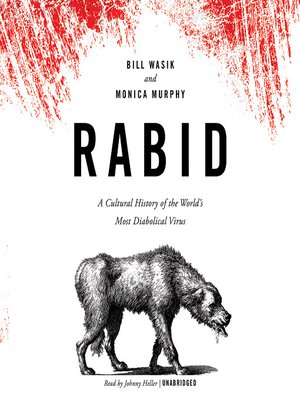

Wasik and Murphy chronicle more than two millennia of myths and discoveries about rabies and the animals that transmit it, including dogs, bats and raccoons. A smart, unsettling, and strangely stirring piece of work." -San Francisco Chronicle "Fascinating. "A searing narrative." -The New York Times "In this keen and exceptionally well-written book, rife with surprises, narrative suspense and a steady flow of expansive insights, 'the world's most diabolical virus' conquers the unsuspecting reader's imaginative nervous system. Rabid: A Cultural History of the World’s Most Diabolical Virus by Bill Wasik and Monica Murphy takes us through Greek mythology to the middle ages to the Renaissance to contemporary times, examining the science, history, and the cultural impact of the rabies virus. From Greek myths to zombie flicks, from the laboratory heroics of Louis Pasteur to the contemporary search for a lifesaving treatment, Rabid is a fresh and often wildly entertaining look at one of humankind's oldest and most fearsome foes. In this critically acclaimed exploration, journalist Bill Wasik and veterinarian Monica Murphy chart four thousand years of the history, science, and cultural mythology of rabies. He said the mobs started as a kind of playful social experiment meant to encourage spontaneity and big gatherings to temporarily take over commercial and public areas simply to show that they could.The most fatal virus known to science, rabies-a disease that spreads avidly from animals to humans-kills nearly one hundred percent of its victims once the infection takes root in the brain.

Hodge, of Submersion Journalism: Reporting in the Radical First Person from Harper's Magazine (New Press, 2008)īill Wasik is credited with introducing the notion of a flash mob in 2003, said in 2010 that he was surprised by the violence of some of the gatherings. Wasik is the author of And Then There's This: How Stories Live and Die in Viral Culture (Viking, 2009). Wasik revealed himself in 2006 to be the inventor of the flash mob, having anonymously organized the first recognized examples in New York City during the summer of 2003.

He has also contributed to McSweeney's and served as Editor of The Weekly Week.

Bill Wasik is a senior editor of Wired Magazine, and was previously a senior editor at Harper's Magazine.


 0 kommentar(er)
0 kommentar(er)
